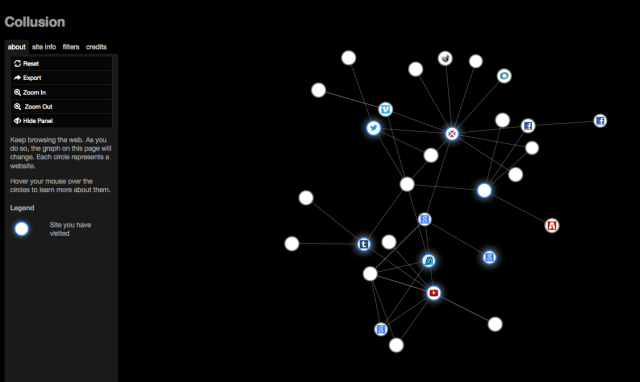A Subjective Guide to TesseracT
This week’s tutorial activity was to create an app using a website known as the app builder. First, we were to outline what the requirements of our particular app were, but in this post I have also focused on the shortcomings of the program and things I would have done differently. To begin, though, here is a list of elements necessary to create a fan-based music app, which I what I initially hoped to create.
Must-haves:
- About the band: include photos, roles, short bios, etc.
- Discography: it’s important to list the band’s albums, tracklists, and maybe even reviews
- RSS feeds: it’s important to show what the band is up to, so having links to Twitter, Facebook, and Youtube definitely helps
- Tour dates: everyone wants to know when their favourite band is stopping by their town!
- Community: because it is fan-based, it is nice to provide a space for fans to communicate with one another
Not quite necessary:
- Links to merch vendors: everyone loves merch, but it is not necessarily the job of a fan app to provide links to it
- Links to ticket vendors: a nice touch, but perhaps not completely necessary if links to official band pages are provided
- Feedback: sometimes it’s nice to move away from the web 2.0 and provide users with information without expecting them to reciprocate through comments, likes, etc.
After considering these factors, it was time to start building my app. Having built apps from scratch before, I found the suggested program to be a bit tedious. I was initially eager after learning that music was a category I was able to choose from. However, this website only offered layouts for people with bands and not people who listen to bands, as I had hoped. Despite this deterrent, I made my best effort to present my app as a fan app for one of my favourite (but little-known) bands, TesseracT. Unfortunately, I struggled to customize my app to the extent I had hoped. The presets weren’t as versatile as I’d expected which resulted in a somewhat unappealing aesthetic. The pictures were not able to be adjusted in site which proved to be a hassle as the cropping and size adjusting had to be done in outside programs. Additionally, I found the size specifications to be very specific, which also turned me off, probably because I am used to sites being intelligent enough to resize on their own or allow user adjustments (ie Facebook thumbnails). I was also displeased with the lack of options to display or not display elements. Sure, you could turn off a section altogether, but it was difficult to be choosey about elements within a section. An example of this is my live dates section, which leaves room for a picture and description for every listed date. Personally, I think this is redundant. When people look for tour dates, they are interested in the when and where, and not many other factors. However, I was unable to rid this section of the unappealing slots for photos, or the italicized word “description”. When I tried to add a link for tickets to be purchased, I was greeted with an error. In fact, despite several attempts, I never received anything but an error message. Such error messages are perhaps the greatest frustration I experienced during this week’s tutorial, and they were not isolated events. I tried countless times to rearrange the order of the albums by release date on my albums page after I realized I’d miss one. Much to my dismay and as a test of my perfectionism, I was unable to do so as the program threw an error message every time I tried.
As the icing on top of the cake, the app builder webpage made my computer run extremely slow, which in turn made researching information on the band and saving pictures a big hassle. It is for these reasons that I decided to take a more subjective approach to app development and deliver other fans a first-hand perspective of what TesseracT is to me. The result is a little more informal than I’d hope for, but it stays true to the online voice I have developed and will (hopefully) serve to entertain my followers, many of whom also enjoy TesseracT’s work.
Despite the frustrations encountered, though, I was able to deliver the app its name promises in a (relatively) short amount of time. It is for that reason, then, that I can recognize the value in this program as it allows those without education of app development the opportunity to easily create something their customers, clients, or fans can make use of.
 Interop Blog | News from the Leading IT Conference and Expo ” Blog Archive ” Virtual Everything, Optimizing Everything, Automating Everything, Bring Your Own Everything & Software Defined Everything – #Interop
As server virtualization expands beyond the 50% mark and into more mission critical applications, and to private clouds and desktops, IT …
Interop Blog | News from the Leading IT Conference and Expo ” Blog Archive ” Virtual Everything, Optimizing Everything, Automating Everything, Bring Your Own Everything & Software Defined Everything – #Interop
As server virtualization expands beyond the 50% mark and into more mission critical applications, and to private clouds and desktops, IT … Making Things Talk
Practical Methods for Connecting Physical Objects Publisher: O’Reilly Media / Make By Cool Jim from Peterborough UK About Me Designer, De…
Making Things Talk
Practical Methods for Connecting Physical Objects Publisher: O’Reilly Media / Make By Cool Jim from Peterborough UK About Me Designer, De…






